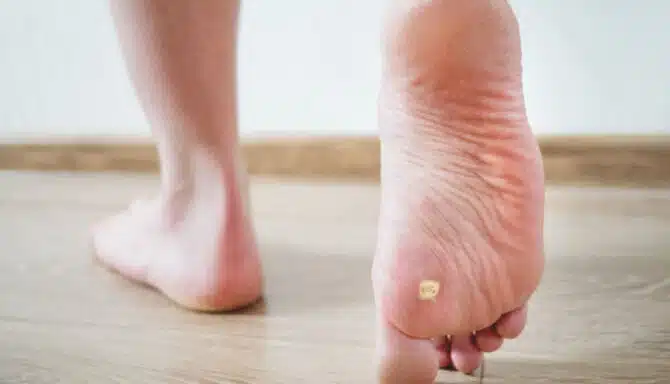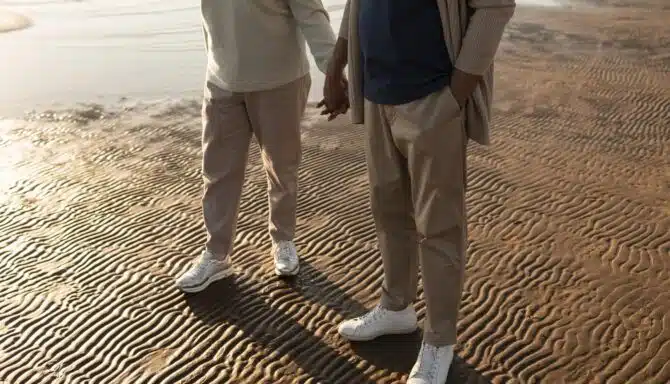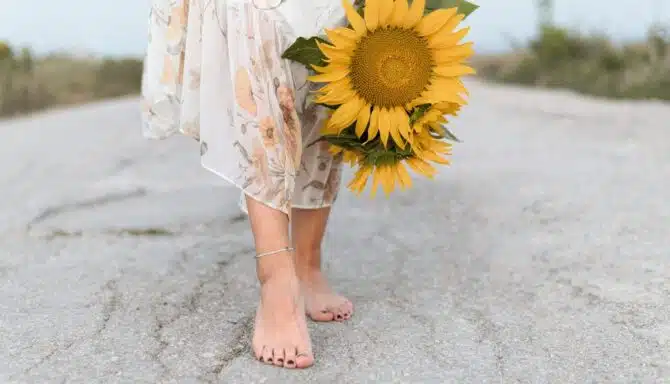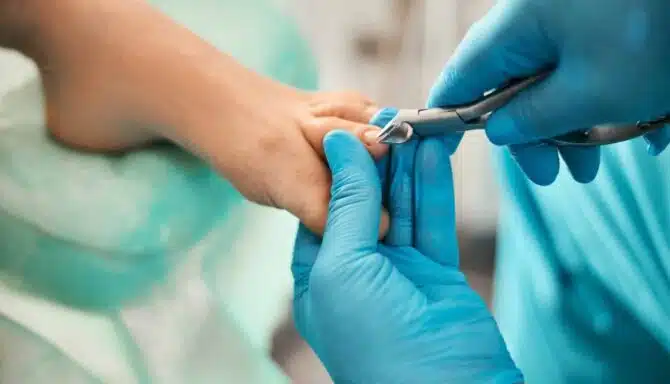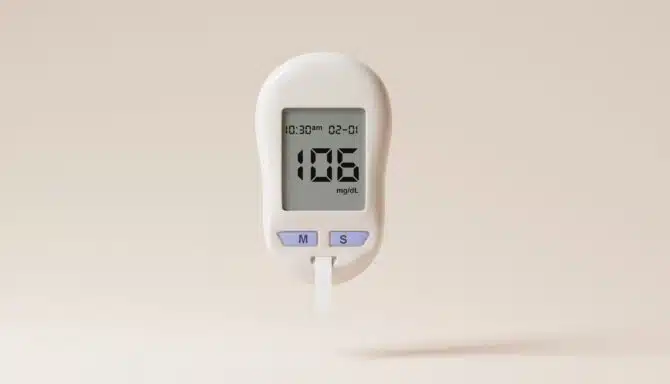December 26, 2024
While corns and plantar warts may look alike at first glance, they differ significantly in their causes, symptoms, and treatments. If you’re unsure about whether you have a corn or a plantar wart, visiting a chiropodist can help you receive an accurate diagnosis and appropriate treatment. Whether it’s corn enucleation or wart removal, timely intervention with a podiatrist or chiropodist at a foot clinic will ensure your feet stay healthy and pain-free.
What are Corns?
Corns are small, thickened areas of skin that develop in response to repeated friction, pressure, or irritation. They usually develop on the feet, particularly in weight-bearing areas such as the tops and sides of the toes or on the soles. Foot corns are essentially the skin's way of protecting itself from friction, forming as a shield for the underlying skin. The hardened layer is your body’s method of preventing skin ulceration.
There are different types of foot corns, each with its own characteristics. Hard corns are small, round, and painful, typically found on the bottom of the foot due to abnormal pressure or friction. Soft corns, which are usually located between the toes, are white and rubbery due to moisture. Seed corns are tiny, painless and appear on the sole of the foot.
Corns: Causes, Risk Factors and Symptoms
Generally speaking, corns are caused by inefficient foot mechanics which lead to excessive pressure and friction. They may also be linked to other foot conditions. For example, an abnormal gait pattern due to flat feet can lead to pressure points. This can then cause corn formation in vulnerable areas of your foot. Here are some key risk factors and causes:
Wearing high heels often.
Wearing shoes that are the wrong size.
Wearing uncomfortable shoes.
Not wearing socks with your shoes.
Irregular walking motion / abnormal gait.
Corn Symptoms Include:
Thickened, hardened areas of skin on the toes, sides, or soles of the feet
Rough or waxy texture on the affected area
Localized pain or tenderness, especially when pressure is applied
Yellowish or greyish appearance, sometimes with a central core
Discomfort during walking or wearing tight-fitting shoes
Interference with daily activities in severe cases
What are Plantar Warts?
Plantar warts are localized skin infections caused by certain strains of the human papillomavirus (HPV), specifically types 1, 2, and 4 which target the epidermis—the outermost layer of the skin. The strain of HPV can sometimes determine how painful a plantar wart may be. For example, HPV 1 may cause deeper, more painful warts, while HPV 2 causes more superficial ones.
These warts develop on the plantar surface of the foot, which includes the sole and heel, areas that bear significant weight and endure pressure during standing and walking. Unlike some other HPV-related warts, plantar warts are non-cancerous and are confined to the feet, as the virus is adapted to thrive in the thicker, tougher skin found on the soles. Plantar warts can last anywhere from two months to several years, especially if left untreated.
For individuals with a healthy immune system, plantar warts are generally not a significant health concern. However, they can make activities like walking, standing, or running very uncomfortable and painful. The pressure exerted on the wart may cause irritation and discomfort, which causes hardened skin to build up over the wart. The latter is also a big reason people confuse them with corns or calluses.
It’s important to seek treatment as soon as you notice any symptoms: Even if it's not interfering with your daily routine, it is still contagious so you can infect others. In addition, addressing these symptoms promptly with a foot specialist like a chiropodist or podiatrist can prevent further complications.
Plantar Warts: Causes, Risk Factors and Symptoms
Plantar warts are contagious and similar to fungal infections like athlete’s foot in that you can contract them by walking barefoot in public, moist spaces. Here are some more details on what activities or risk factors may lead to plantar warts:
You have a weakened immune system. Many people's immune system can recognize and fight off the HPV virus before warts form. However, people with a poorly functioning immune system are more susceptible as their body is less equipped recognize and fight the HPV virus. People who are immunocompromised may take longer to fight the virus, meaning that that the warts will take longer to treat.
You’re 65 or older, or a child or teenager: Plantar warts can be more common in these age brackets. For children, their immune systems are still developing, and they’re more likely to share communal spaces like gyms and locker rooms. For seniors, the immune system may be compromised.
Environment exposure and being barefoot: Frequenting warm, moist environments like swimming pools, locker rooms, and communal showers increases exposure to HPV. These areas are ideal breeding grounds for the virus, making it easy to contract through bare feet. Walking barefoot on abrasive surfaces, like pool decks or gym mats, can also create micro-injuries that allow HPV to enter.
Skin cracks and abrasions: Any break in the skin, including cracks, blisters, or injuries, can act as an entry point for the virus.
Poor foot hygiene practices: Neglecting foot care, such as not cleaning feet thoroughly or allowing them to remain damp for prolonged periods, can create conditions favourable for infection.
Plantar Wart Symptoms Include:
Rough, thick circular patches that have similar colouring and shape to a cauliflower.
Warts that form on the heels, around your toes, or on the ball of the foot.
Other discoloration: brown, pink, yellow or gray.
“Wart seeds” – which look like a small black dot in the wart
Pain, tenderness and general discomfort.
Bleeding.
Both cluster and solitary growth are possible.
Corns and Plantar Warts: Key Differences
While warts and corns can look and feel very similar, the main difference lies what causes them. Corns are caused by the body's response to excessive friction against the skin, whereas plantar warts are caused by strands of the contagious HPV virus.
Here are two additional ways to help distinguish between corns and plantar warts.
Pain type: Plantar warts may cause pain when pinched from the sides, whereas corns are tender when pressure is applied directly to them.
Appearance: Corns have a “waxy” yellowish appearance, whereas plantar warts often have a black dot in the centre. And while difficult to tell, warts go much deeper into the skin than corns.
Location: Corns tend to occur in the non-weight bearing parts of the foot, like between or on top of the toes. Conversely, plantar warts tend to occur on the weight-bearing parts of the foot, like the ball of the foot.
Multiplication and Spreading: Corns are concentrated in pressure-points on the foot and don't typically "spread". Plantar warts, however, can multiply and spread to other parts of the foot if the virus is allowed to grow unchecked.
Corns and Plantar Warts: Treatment and Prevention
https://www.youtube.com/shorts/TDV3Dd98oOM
Many services performed by a chiropodist or podiatrist are available at a foot clinic and can target both conditions.
How to Treat Plantar Warts
Plantar wart treatment requires a specialized approach. As they're caused by a virus, they cannot simply be "removed". Rather, depending on the severity of the warts, the frequency of re-exposure to the virus, and the person's immune system, warts can take multiple treatments spanning over several months.
Here are the different treatment options for plantar warts, in order from most conservative to most aggressive:
Salicylic acid, a common over-the-counter treatment, gradually softens the wart and sheds layers of skin. Although it is not painful, it may take longer to see results. For a faster alternative, a chiropodist can prescribe a higher-strength salicylic acid solution to be applied at home with follow-up visits. The chiropodist will then routinely debride the dead skin covering the wart to allow better penetration of the medication.
Cryotherapy, or freezing, is another standard method where liquid nitrogen is applied to the wart to freeze and destroy the wart tissue. This treatment may cause temporary pain and requires multiple sessions, each 2 -3 weeks apart.
Cantharone (canthacur) is an acid applied by a chiropodist that causes a blister to form and the wart to lift off the skin, typically within a few days. Although this treatment is more effective and doesn't take as long as cryotherapy, the resulting blister may be uncomfortable. This is the most common treatment used by chiropodists. It requires multiple treatments, each 2 - 3 weeks apart (though typically not as many as cryotherapy).
Wart needling is a surgical procedure. It involves puncturing the wart multiple times with a sterile needle to trigger the body's immune response. It is a good option for multiple or resistant warts.
Finally, excision involves surgical removal of the wart. It is reserved for stubborn warts that don't respond to other treatments, and has a risk of scarring. It is seldom used.
How to Treat Corns
A chiropodist or podiatrist can treat corns by gently shaving down the thickened skin with sterilized tools. The treatment is effective, safe, typically painless, and will discomfort without risking infection.
Inserts and custom orthotics can also play a significant role in managing and preventing recurrent corns. Custom orthotics are specially designed to provide support and distribute pressure evenly across the foot. This reduces the friction and pressure points that can lead to corns. Over-the-counter insoles and inserts can also provide extra cushioning and improve the fit of shoes, offering relief and preventing further irritation.
Self care can also go a long way. Soaking corns in warm water softens them, making it easier to reduce its size. It's also important to moisturize your feet regularly to make the skin stronger and more flexible, which will reduce its sensitivity to friction and hardened skin buildup. Toe pads or non-medicated patches can also protect corns from further irritation and promote healing.
Lastly, but equally important, you must find the right shoes to wear for each season and choose shoes with a proper fit. This can help prevent the pressure and friction that causes foot corns. A complimentary shoe fitting at a foot clinic can help!
https://www.youtube.com/shorts/R7GV0GbKhvQ
August 19, 2024
Foot care for seniors is a vital aspect of maintaining overall health and mobility. As we age, our feet undergo changes that can lead to various problems, making it essential to prioritize foot health. This article will explore common foot problems in older adults and offer practical foot care tips for the elderly to help maintain mobility and prevent discomfort as much as possible.
Understanding Aging Adults' Foot Health
Aging adults' foot health often deteriorates due to factors such as reduced blood circulation, thinning skin, and the natural wear and tear on joints and muscles. These changes can lead to an increased risk of developing foot issues, which can severely impact mobility and quality of life.
Common Foot Problems in Older Adults
Several common foot problems in older adults can arise as a result of aging:
Plantar Fasciitis
Decades wearing the wrong shoes for your feet = feeling the damage and heel pain when you get older. Seniors are also vulnerable to plantar fasciitis if they have balance and mobility challenges, as these affect the natural gait pattern. In other words, as older adults struggle with movement, they might walk differently, which can put extra stress on their feet and lead to heel pain. Lastly, poor blood circulation means less ability to recover from “micro injuries,” which is essentially what plantar fasciitis is.
Bunions
Bothersome bunions affect seniors more than younger adults. The toes spread out more due to natural aging-related foot changes, placing pressure on the wrong areas. Bunions can also tend to form and worsen gradually over time, meaning seniors will feel their full effects.
Dry Skin
Skin aging doesn't just affect our face; it affects our feet too! As we age, the processes that help our feet stay moisturized, namely the production of natural oils and cell renewal, slow down. This leads to dry, flaky skin on the feet. Dry skin is on the feet is not just a cosmetic concern; it makes the feet more prone to developing many problems like itching, cracked heels, corns and calluses.
Corns and Calluses
Not only does our skin get dryer as we age, it also gets thinner. This makes the feet more prone to developing corns and calluses. Corns and calluses are caused by friction, and are two of the most common skin problems affecting seniors. When the skin thins, the skin forms calluses and corns more quickly in order to protect itself. This issue is compounded for older adults who have been wearing ill-fitting shoes for years
Arthritis
Osteoarthritis (also referred to as degenerative joint disease) is a form of arthritis typically associated with aging. It is caused by cumulative wear-and-tear on the joints. Over time, the protective lining around the joints wears down, resulting in excessive rubbing and grinding between joints.
Foot Care Tips for the Elderly
Foot care for seniors entails a proactive approach. Here are our top tips for maintaining foot health as you age:
Regular Foot Inspections and Hygiene
Our number-one foot care tip for older adults is to get regular medical pedicures with a chiropodist. This is especially helpful for seniors who have difficulty bending or trimming their own toenails. A licensed Toronto chiropodist can properly trim and file your toenails, remove corns and calluses, and address any other common foot problems in older adults. A foot specialist will also inspect and keep an your feet for any signs of redness, swelling, cuts, or sores that could indicate a worsening skin issue. Our Toronto chiropodists will also provide expert foot care advice for your at-home maintenance.
At-Home Foot Care: Moisturizing, Hygiene and Inspections
Foot care for seniors should involve moisturizing daily with a foot cream in order to keep the skin on the feet strong and firm. This will also help reduce callus and corn buildup. At-home foot care for seniors also involves practicing good hygiene, including washing feet daily and keeping your toenails trimmed. This is essential to prevent infections and other complications.
Proper Footwear and Medical Devices
Footwear plays a significant role in senior foot care. Shoes should provide adequate support, have a wide toe box to prevent crowding, and offer cushioning for shock absorption. Orthotic inserts can also be beneficial for those with specific foot conditions or discomfort, especially plantar fasciitis. There are also products like silicone toe separators, bunion aligners, and bunion splints worth trying.
Maintaining Foot Mobility and Stability
Regular exercise and fall prevention strategies can keep the muscles and joints in the feet strong and flexible. Simple exercises like toe stretches, ankle circles, and calf raises can improve circulation and maintain range of motion.
A targeted approach is ideal, and you can memorize foot exercises and stretches designed for your condition or age, such as routines for bunions, arthritis part one and two, plantar fasciitis, and women over 65. Many of these exercises help with more than one condition!
June 24, 2024
Oh no, yellow feet! This seemingly alarming skin pigmentation is not usually cause for concern and is far more common than you think. Yellow feet commonly present as yellow bottoms of the feet and are usually not an immediate emergency. That said, they should be looked at during a foot assessment as there may be underlying medical causes or dermatological conditions at play. Let’s review the top culprits for yellow skin on the bottom of your feet.
Calluses and Corns
If the yellow skin on your feet feels hard to the touch and only occurs in certain spots (the whole foot isn’t yellow), you probably just have a lot of thick calluses!
Imagine your feet are like well-trodden paths; the more you walk on them without protective footwear, the thicker and tougher they become, forming “callused armour” which often has a yellow hue.
One of the most well-known podiatric concerns, calluses can be treated if they become a problem for hygienic reasons and also to prevent them from becoming more painful, infected or ruining your skin’s integrity and strength.
Corns can also cause thick, yellow skin.
Calluses and corns can be easily removed by a chiropodist using sterilized, medical-grade equipment. Read more about how our chiropodists treat calluses.
Hyperkeratosis
A dermatological condition called hyperkeratosis causes excessive hard and yellow calluses that can cover the majority of the bottom of your foot. When combined like this they can be a lot worse than solitary calluses and are more likely to crack, bleed, and hurt.
Carotenemia
You are what you eat! And in this case, you may be eating too many carotene-rich foods (like carrots, sweet potatoes, pumpkins — anything orange!) if the entire bottom of your foot has a mild, yellow hue. The good news? This is harmless.
While noticing this effect on the bottom of the feet can be disconcerting, it may also occur on your face, which might have a positive effect on your confidence. Studies show these mild, facial skin changes can contribute to the overall appearance of health and vitality in humans. Pretty cool!
Jaundice
Jaundice is a serious occurrence that points to a poorly functioning liver, gallbladder or pancreas. Your doctor will help you determine the root cause.
A tell-tale sign that you’re experiencing jaundice is if the yellow colour is quite strong, and if the whites of your eyes are also yellow (sclera).
If you don’t have any other symptoms outside of mildly yellow feet, it’s unlikely you have jaundice, but it’s better to be safe than sorry!
Fungal Infections
Athlete’s foot causes flaky and itchy skin clusters around your toes and the ball of the foot. They look red or pink when irritated, but sometimes turn whitish yellow. Don’t try to treat this at home - you might damage your skin and nail health. Seek guidance from your local Toronto foot clinic instead! They can point you towards the right ointments, creams and other treatments. Learn more about treatment and prevention.
Anemia
This medical condition affects your red blood cells and impairs oxygen flow throughout your body. The entire foot or entire bottom of the foot will have a bright, yet mild, yellow tint. If your feet are cold to the touch in addition to being yellow, you might have anemia.
May 30, 2024
As summer approaches, our feet emerge from the confines of socks and boots, ready to step into sandals and flip-flops. However, after months of neglect and hiding, our feet may not be in the best condition to be on display. This is where medical pedicures come in—a treatment that goes beyond mere aesthetics. Let's delve into the benefits of medical pedicures and why they should be on everyone's summer to-do list.
Professional attention to foot health
Unlike traditional pedicures, medical pedicures are performed by trained professionals called chiropodists. They prioritize foot health, ensuring your feet are healthy and feel good. Chiropodists are equipped to address various foot conditions such as calluses, corns, ingrown toenails, and fungal infections. They can also notice and diagnose other things that may be cause for concern, like poor circulation, warts, flat feet, and other foot conditions that may be affecting you. Most importantly, chiropodists can provide professional tips and advice on foot care.
Preventative foot and nail care
Regular medical pedicures can help prevent many standard foot problems before they even start. Addressing issues like calluses and ingrown toenails early on can avoid more severe complications. In addition, toenails grow faster in warm weather, so a medical pedicure in the summer is timely.
Customized treatment
Medical pedicures are tailored to your specific foot needs. Whether you have dry, cracked heels, thickened toenails, or sensitive skin, the treatment can be adjusted to address your concerns effectively. Chiropodists will assess your feet and recommend the appropriate action, ensuring you receive personalized care at every step.
Hygiene and safety
One of the primary benefits of medical pedicures is the emphasis on hygiene and safety. Sterilized instruments, disposable blades and discs, and stringent cleanliness protocols are standard practice in foot clinics. All cleaning protocols are regulated by Health Canada and the College of Chiropodists of Ontario. This reduces the risk of infection and ensures a safe, worry-free experience, especially those with compromised immune systems or diabetes.
Stress relief
It's worth remembering the relaxing aspect of a medical pedicure. Beyond the therapeutic benefits for your feet, the experience can be incredibly soothing for your mind and body. Taking time out of your busy schedule to pamper yourself can lower stress levels, improve mood, and enhance overall well-being.
December 21, 2023
Diabetes is a chronic condition experienced by millions of people worldwide, including 11 million Canadians. Chances are, diabetes affects you, or someone you're close with. Diabetes can have a significant impact on various aspects of your health, including your feet.
Foot health is a top priority for individuals with diabetes, as the condition can lead to a range of complications that affect the lower extremities.
Understanding the connection between diabetes and foot health can help you address the condition and thwart potential issues. In this blog post, you'll learn more about how diabetes and foot health concerns are intertwined.
The link between diabetes and foot health
Diabetes is known to cause problems related to blood circulation and nerve function, and these issues can take a toll on your feet. Here are some key factors to consider:
1. Poor blood circulation
Diabetes can damage blood vessels, reducing blood flow to the feet. This diminished blood circulation can result in slower wound healing and an increased risk of infection.
2. Neuropathy
Diabetes often causes peripheral neuropathy, a condition characterized by nerve damage that predominantly affects the feet and legs. Neuropathy can lead to numbness, tingling, or a loss of foot sensation. Reduced sensation makes it difficult to detect injuries, blisters, or sores. This lack of sensation increases the risk of complications.
3. Foot ulcers
Diabetes patients are prone to developing foot ulcers due to reduced sensation and delayed healing. Ulcers may become infected and become more severe if not addressed promptly.
4. Calluses and corns
Diabetes can alter foot anatomy, leading to abnormal pressure points on the feet. These pressure points can form calluses and corns, causing foot discomfort and an increased risk of ulcers.
5. Fungal infections
Diabetes is thought to cause dysfunction of the immune response. A weakened immune system fails to control the spread of invading pathogens. As a result, those with diabetes are at a greater risk of fungal infections, like athlete's foot and toenail fungus.
6. Reduced ability to heal
Elevated blood sugar levels can impair the body's ability to heal wounds. Even minor cuts, blisters, or abrasions can become problematic if improperly managed or untreated.
How to care for your feet when you have diabetes
Proper foot care is critical for individuals with diabetes. To maintain good foot health and minimize the risk of complications, consider the following tips:
Regular foot inspections
Perform daily foot checks to look for any signs of injury, blisters, sores, or changes in colour and temperature. Early detection is critical to preventing more significant problems. You can also schedule annual foot assessments at Feet First Clinic, during which a chiropodist will thoroughly examine your feet and your foot health history.
Maintain healthy blood sugar levels
Aim to keep your blood sugar within the target range your healthcare provider recommends. Controlling your blood sugar levels will help your overall health, including your feet.
Choose appropriate footwear
Opt for comfortable, well-fitting shoes that reduce the risk of pressure points and provide adequate support. We carry a wide range of footwear and orthapedic footwear here at Feet First Clinic. See more in our complete guide on how to choose the perfect pair of shoes for you and your feet.
Moisturize your feet
Keep your skin hydrated to prevent dryness and cracking. Avoid applying lotion between the toes to prevent fungal growth.
Trim your nails carefully
Trim your toenails straight and avoid cutting them too short to prevent ingrown nails. People with diabetes should avoid nail salons. Instead, you should see a chiropodist for routine diabetic foot care. That way, you feel comfortable knowing the trimming is performed correctly.
Stay active
Engage in regular physical activity to promote better circulation. If you have trouble being physically active, consider low-impact activities like swimming, stationary cycling, or walking.
October 23, 2023
Menopause and foot health have an indirect relationship. In other words, the symptoms and body changes you experience during this time can eventually cause foot conditions. On the bright side, foot problems during menopause are usually not serious and within one’s control. This is a relief for women who have enough to deal with during this challenging time!
Today we’ll investigate what happens to your feet during menopause and what prevention strategies and foot care routines you can master to keep your feet feeling happy and healthy.
Photo by iStock
Hard and Dry Skin
Studies show that estrogen aids in the prevention of skin aging by retaining moisture. So when menopause hits and estrogen levels drop, the padding on the heel of the feet can become hard and dry over time. This may lead to cracked heels, which may become progressively more painful if you don’t treat them.
What You Can Do
Practice a healthy self-care / foot care routine with an emphasis on moisturizing at least twice per day. Try Gehwol medicinal products with added urea.
Burning Feet
While hot flashes and night sweats are not always fully understood by medical experts, for those going through menopause they are very real. Somewhat related are the burning sensations also felt in the feet, which may be caused by poor circulation and dropping estrogen levels.
What You Can Do
Submerge your feet into a nice, warm (not too hot!) foot bath to help with circulation. Make the most of it by adding a Gehwol bath salt product to the water. You can also work on improving your circulation by practicing easy, low-impact foot exercises.
Photo by Macrovector From freePik
Plantar Fasciitis
Plantar fasciitis and heel pain in menopausal women starts with collagen reduction, according to Foundation Podiatry. This causes less elasticity in the plantar fascia and the resultant pain. Furthermore, menopausal weight gain can cause you to place excessive pressure on the feet and change your walking patterns, causing even more discomfort.
What You Can Do
Orthopedic shoes and custom orthotics can help correct your walking patterns and ease the symptoms of menopausal foot pain.
Photo By iStock
Corns, Blisters and Calluses
Abnormal gait patterns, placing pressure on vulnerable parts of the feet due to weight gain, and less healthy skin can all lead to more painful little nuisances for your feet. Years of wearing ill-fitting shoes are also not doing you any favours when it comes to skin issues for your feet.
What You Can Do
A chiropodist can remove and smooth corns and calluses, and treat painful blisters. You can also try products like corn and blister pads. Most importantly, you should ensure you always wear comfortable, well-fitting shoes (a shoe fitting can set you up with the right pair).
Photo by FreePik
